Our friend Felicity Ford has been on a mission to raise funds for her brilliant book: The Knitsonik Stranded Colourwork Sourcebook, which you can read more about here. If you have been following her journey you will know she had already reached the initial £9,000 needed and above (at the last check, she had reached over £11,000). Since her first visit to Shetland Felicity has had a great relationship with us at Jamieson & Smith and we are proud to be on her blog tour for this book which will using our wool.
I thought since Felicity will be doing a lot of knitting with our yarns I would ask her some questions about what she likes about Jamieson & Smith. Congratulations Felicity, we cant wait to see the finished book!
1. How did you come to find out about J&S and our yarns?
I’d read about your yarn on different knitting blogs, but it was when we started WOVEMBER that I really understood how brilliant Jamieson & Smith is.
WOVEMBER is a campaign website run by myself, Kate Davies and Tom van Deijnen (aka Tom of Holland), established in 2011. The key points of our mission are that we love real wool, and admire the amazing skills involved in taking fleece from sheep and turning it into finished textiles. We think the term “wool” is special, and should be reserved for articles of clothing which contain a high percentage of fibres derived from actual sheep.
During the month of November, we write about and research the work involved in growing, shearing, sorting, scouring, spinning, knitting, and weaving with WOOL! We share our findings to raise awareness of what makes this fibre special, and to discourage companies who are not producing woollen goods from misleadingly describing their polyester and acrylic goods as being “wool” or “woolly”. We are interested in celebrating connections between the landscapes where wool grows and finished articles of clothing; in traceable and sustainable textile production methods; and in promoting the traditional skills associated with woollen textile manufacture.
In our first year of the campaign, Kate told me there was no better person to interview for WOVEMBER than Oliver Henry, Managing Director of Jamieson & Smith, and wool grader and sorter for over 45 years, and she was right. Kate’s interview with Oliver blew my mind, and opened my eyes to everything that makes Jamieson & Smith special:
Sorting is both challenging and rewarding. Sometimes a coloured fleece will take the breath from you when you least expect it to, like when you come across a rare marking or a beautiful crimp. But the best bit of my job is seeing the fruits of our efforts come back into the wool store transformed into everything from yarn to scarves to carpets to beds…
I think that telling the story of our wool – and the heritage and culture, people and communities behind it – is one of the most important bits of my job. It’s important for the future of the industry in Shetland, and for a new generation of budding crofters and farmers, to tell people why Shetland wool is so special (and has been for centuries) and what an honour it is to be involved with one of the finest natural fibres in the world.
– Oliver Henry, WOVEMBER 2011
As well as agreeing completely with Oliver’s sentiments, in the photos sent with the interview, I was thrilled to see that you keep raw fleece and finished hand-knits in different parts of one building. To me, that speaks of a fantastically direct relationship between land and wool. Many farmers I’ve interviewed in other parts of the UK say that they have no idea what becomes of their wool after it is sheared and sent off. But crofters in Shetland can leave their fleeces in the wool room, and then go right into Jamieson & Smith to see the sturdy carpeting and exquisite hand-knitted shawls and tams that are ultimately produced from the wool they have grown.
To me – and I imagine to many of the other knitters who visit during Shetland Wool Week – this is inspiring because it speaks of a direct relationship between Shetland’s woollen textiles, crofting traditions, and distinctive, working landscape. This is special because it’s been sadly lost in so many other places.
I have been obsessed for years with the history of the wool industry along the Southeast coast which I remember from my childhood holidays. When I was researching a piece for Twist Collective about finding traces of shepherding in the landscape, I discovered there had once been a wool staplers of great renown in Chichester. It was called “The Woolstaplers” and was run by Ebenezer Prior & Sons. Old photos in local libraries showed men at work there, forearms deep in great skeps filled with fleece. However these days, The Woolstaplers is remembered only in the name of the tarmac carpark which now covers the land where it once stood.
I was very sad when I turned the corner on my map of Chichester to find no other remainder of this once great woolly epicentre of the South, but consoled to later learn that the great art of sorting and grading fleeces is being kept alive by The Shetland Woolbrokers.
2. What is it you like best about the wool?
The KNITSONIK Stranded Colourwork Sourcebook has been in the pipeline for a long time. I’ve been fascinated with Huntley & Palmers (the biscuit factory that thrived in Reading through 1800s – 1900s) and the brickwork of this town for a few year. In 2011 Kate hunted down an amazing vintage Huntley & Palmers biscuit barrel on eBay for me, and sent me a package of Jamieson & Smith in appropriate shades, so I could start trying out my idea to knit the bricks and biscuit tins of Reading.
At first your yarn seemed so special that I was afraid to knit with it in case I made a horrible mess of your lovely wool…
…but I have since discovered that my worries were completely unfounded, for your yarn is both forgiving and strong, and the shades are so nice that you can always get something great out of them with a little patience, trial and error.
Oliver talks of two distinctive breeds once running together in Shetland – one rough and sturdy, with a “skadder” (mane) on its back and neck, and one “kindly-woolled” breed. When I interviewed him for my soundmap of Shetland wool sounds [http://aporee.org/maps/work/projects.php?project=shetlandwool] he talked about these two breeds running together on the fence-less Shetland landscape, and eventually cross-breeding to produce what we now think of as Shetland sheep. I may be fanciful or romantic, but I feel that I can perceive both the rough sheep and the soft one in your wool, and this is what I love best about it.
The very slight roughness in the 2-ply gives it enough grip that I have become fearless to the point of irresponsibility about my steeking. I can cut willy-nilly with no thought of negative consequences, for I know that the yarn will hold! You have to really pester your 2-ply jumper weight to make it unravel sideways, and unless you have plans to really harass it, a knotted steek is perfectly secure. For me, there’s character and sass in that grippy quality; it gives me faith that my knitting won’t pill and that there will be structure and integrity to the fabric I produce with my needles. I like to imagine the rough, wild Shetland sheep with its skadder is running around somewhere in my knitting, and that brings to mind my memories of the cliffs, the brisk North sea, and the peat hills that I have so enjoyed exploring in my short time in Shetland.
As for the kindly components of your wool, they are what give my blocked knitting its lovely fuzzy halo, light hand, and infinite wearability. The airy fibres, woollen-spun and soft, block down into a light, even surface. I love that I can knit baby things or scarves or other items which require softness with your wool, but that – because of the tiny bit of rough they contain – that these soft and lovely things still have character and personality. I also love that the wool is directly traceable to the Shetland landscape, and that I understand the journey it has made from sheep to shelf.
3. What are some of your tips for Fair Isle knitting and blocking your samples?
My top tip is to use Jamieson & Smith yarn! I’m serious about that. I’ve tried knitting stranded colourwork with a variety of yarns, and I have not enjoyed the results as much as with your wool. I think when you are getting the hang of stranded colourwork, it’s no bad thing to have a yarn that doesn’t slip around all over the place, and your 2-ply jumper weight holds nicely on my needles. I’ve also found that it can handle a fairly aggressive blocking process, and that this can correct a multitude of tension crimes, especially if you tend towards knitting rather loosely, which I do.
My next tip is to enjoy the process. Hazel Tindall says a nice thing about how there is a rhythm to Fair Isle knitting, and I agree with her. I don’t know what other knitters do, but I tend to glance at my chart and then go around the row chanting silently in my head something like “one red, white, white, white, two red, one white…” after a while that just turns into numbers… and after another while, it just turns into a kind of pattern, which patters along in the background of my thoughts, like a very pleasing musical phrase. So I would say that – when knitting stranded colourwork – find the rhythm, and the rest is easy.
I also would advocate the two-handed approach, simply because I personally find that extremely easy myself. Knitting two-handed, I know that the colour I’m holding in my left hand and picking up with my right always dominates. This allows me to decide which bits of the pattern I want to foreground, and which parts to leave in the background. I know other knitters who prefer to get a more even fabric, without a dominant colour, or who like to hold both yarns in the right hand or both in the left… in the end it’s about finding a way that works for you.
For blocking, I simply soak my knitting in hot water with a tiny bit of soak solution in it, and wait until the water’s cold. Then I gently squeeze the knitting with both hands to get all the water out of it, and then I generally slap it against the edge of a table a couple of time, to get all the steeked ends lying flat. I have big foam boards which I then pin the swatch to. I pop this up on a radiator where the knitting dries, and then in the evenings, I knot up the ends and trim them to neaten them. I find this creates very pleasing swatches which can be examined and referred to for future knitting projects. They look lovely finished like this, and if you compare them to sketches or drawings, the materials involved are nowhere near as expensive as paint or charcoal, and you learn loads for the time you’ve spent trying things out.
4. What are your top 10 colours?
I love 125, because it really is so reminiscent of the brickwork around here which I love so much, and 54 for the same reason. There is a type of brick in Reading called “Silver Facing” which I am reminded of when I look at 54. I have a fondness for the vivid and synthetic feeling of 79 – it’s very lurid and reminds me of Dorothy finding green things in the Nome King’s underground domain in “Return to Oz” – it is precisely the colour of The Emerald City as the 1950s movies depicted it.
But who can argue with the far softer shade of FC24, and its resemblance of distant fields on the skyline?
49 is such a lurid mauve, and so dominant and fresh in anything it touches that I have developed an epic respect for it. 1280 is the perfect colour for describing the blueish greenish violet on the bloom of soft fruits… I have recently been really enjoying the tempered yellow of 121; it’s a heathery blend of soft gold, mixed with salt and pepper shades, which make it play really nicely with grey.
131 reminds me of the Crayola crayon I had as a child, called “periwinkle”. I was obsessed with that shade, and it is a very warm, soft blue, like the dot in the centre of forget-me-nots, or the dark shades striping the centre of the bluebell. It is beautiful.
Many of the shades are lovely because of how they activate the things around them, and the soft, translucent creaminess of 202 contrasted with the hard, uncompromising white of 1 is an interaction I enjoy greatly. I worked in a florist for a couple of years when I was 18, and I always loved making up all-white bouquets best of all, because I realised through making them how complicated and multi-shaded white is. It had always just been the colour of paper – the colour waiting to be drawn or painted on – but now I think of it as a very active force of colour in its own right, and I love playing with this in my stranded colourwork.
5. What have been your favourite experiences of Shetland?
When I came in August to make recordings about Shetland wool and its history in the isles, my favourite experiences wer going to The Voe Show, and staying in the Nesbister Böd at Whiteness.
The Voe Show celebrates the local talent and produce from the land itself. There were so many lovely things to see, from homemade cakes to preserves and jams, to flowers grown in people’s gardens, to the lovely Shetland sheep, and finally, to the heart-stoppingly-beautiful knitwear. There was an inspiring frisson of competition in the air and it was superb to see the proud rosettes perching like butterflies on the best knitting, and also the amazing children’s knitting, with encouraging WELL DONE badges pinned on it. The Colourbox challenge that you set each year at Jamieson & Smith really intrigued me – where 8 colours are chosen, and knitters pick shades from within the selection to produce a piece of colourwork! I photographed a few of the entries last year, because I was fascinated to see how different knitters had used the same shades to produce diverse results.
It’s not expensive to have the Nesbister böd at Whiteness to yourself, and I really wanted to listen to the sound inside a traditional Fisherman’s böd without any distractions, so I paid the extra. It is a short walk from where you leave your car, and right out on the edge of a peninsula. There is no electricity inside, and the only running water is a tap on the outside of the building. A bag of peats inside is used in the stove inside, and as soon as you open the creaky wooden door, you can feel the thickness of the stone walls, and the sense of age and time and quiet. I heated up a flask of hot water and sat outside on the rocks holding it until the sun went down. I heard otters splashing, and sheep baa-ing their goodnights to one another on the beach. The water lapped at the building very gently, and the fire purred in the stove. I have hydrophones – microphones which you can put into the water – and I had one in the voe. It was so quiet that I could hear the little pincers of a crab as he scuttled about on the rocks at the bottom. That was the quietest place I was ever in, and in the morning when I got up, all the sheep were resting along the beach, right outside my door, and there were jellyfish dotted through the water like little purple jewels. It was magic.
During Shetland Wool Week, I had lots more favourite experiences! I really enjoyed the time I spent with you and Sandra in the shop after Tom’s darning classes, laughing and playing with the wool! Staying with Tom in Nortower Lodges was beautiful, for it is a lovely spot, and the people who own it are lovely, and made us feel really welcome. I liked arriving home to lots of baas from their sheep one evening! Tom is a superbly calm and supportive comrade; he was very kind about my relentless accordion practice while writing and rehearsing the “Shetland Wool Week Song”.
I also loved sitting in the Wool Week Hub in the Shetland Museum, talking to Museum staff about their own lives in knitting. So many women working in the museum are amazing knitters, and it was a very great pleasure to sit with them in the boathouse, looking through textiles from their own lives, and learning about the history of Shetland knitting from personal perspectives, as well as through examining the fantastic permanent displays. I especially loved the story of a pram blanket that was later turned into a scarf, and an old Tam, handed down through the generations in one Shetlander’s family. To me it seems special that everyone in the Museum wears sweaters designed by Wilma Malcolmson of Shetland Designer; that you can see the older Shetland textiles in the Museum cases together with these contemporary examples of a thriving Shetland wool industry. That kind of visible continuity in the wool industry is wonderful. As part of this continuity, you can see how historic textiles are influencing the production of new yarns – for instance your Heritage yarn. I love this photo of Tom, trying on one of the Fair Isle kit “keps” available in the Museum shop, using the Heritage yarns you have developed. I think it is a Fisherman’s kep, to be worn out on a Sixareen boat; behind Tom, you can just make out a model of a Sixareen, and an example of an original kep… where else in the world could you see the past and present lives of wool so simultaneously?
I also love thinking about the future of Shetland wool and so it was great to see the rams at the Flock Book, and to watch the auction. It was beautiful to see so many fine examples of Shetland sheep in one place, certain in the knowledge that these animals and their genes will play a role in the future of Shetland wool.
A huge congratulations to Felicity for reaching her target, her passion comes through in her writing and we think the book will become a classic!
Jamieson & Smith
real shetland wool
Photos
Unless otherwise stated all photos are property and copyright of Jamieson & Smith (Shetland Woolbrokers LTD). Please do not use our photographs without our permission.








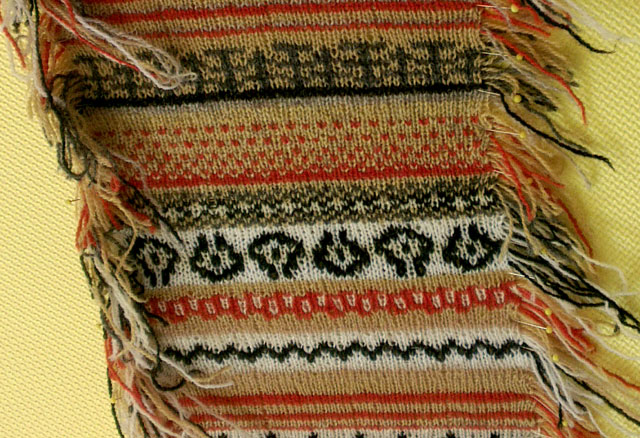





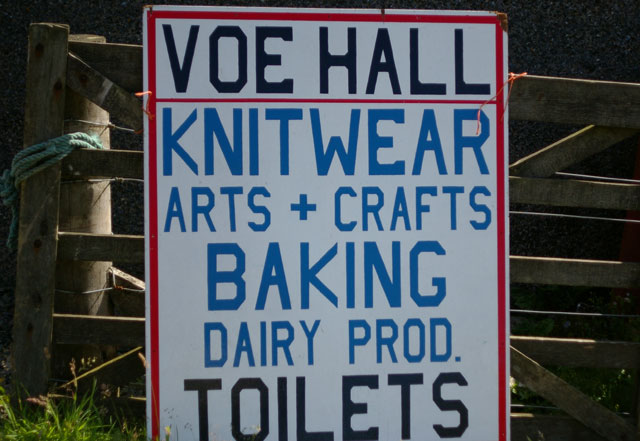





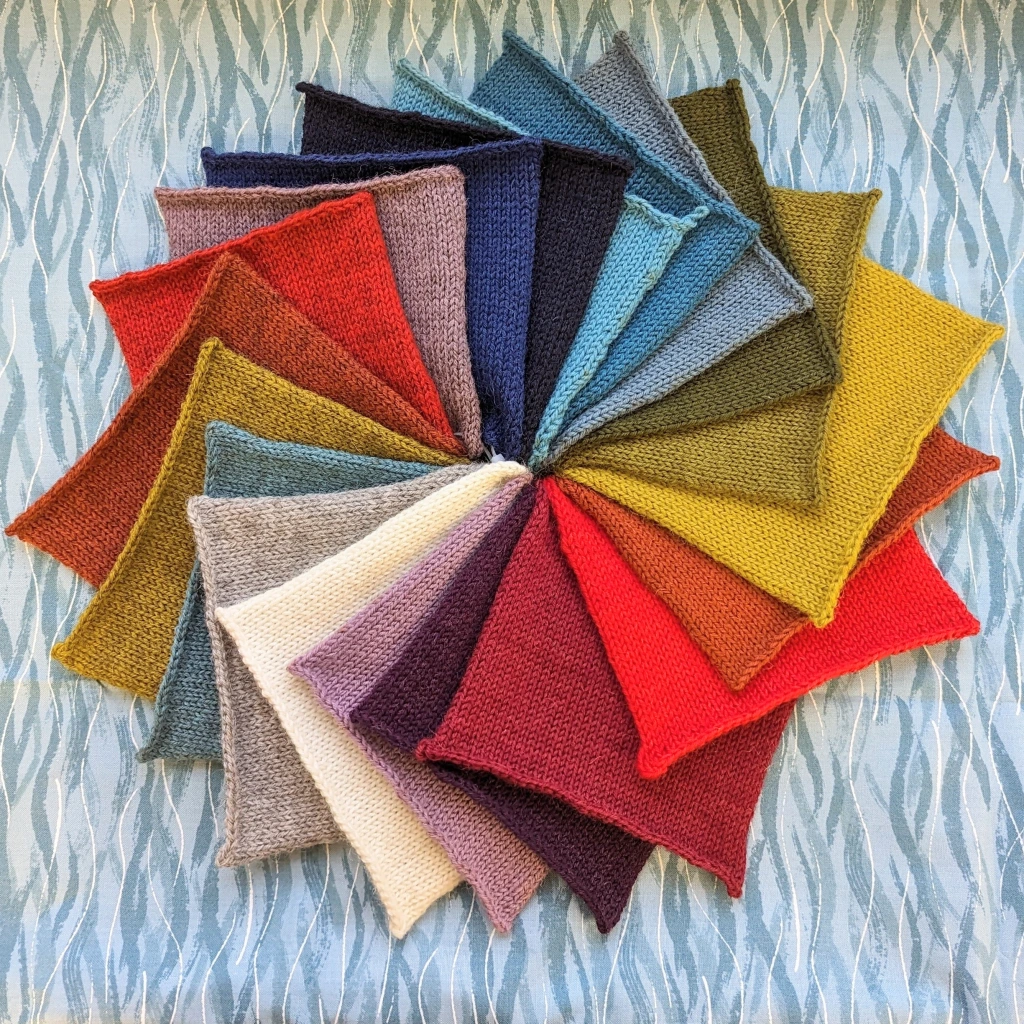
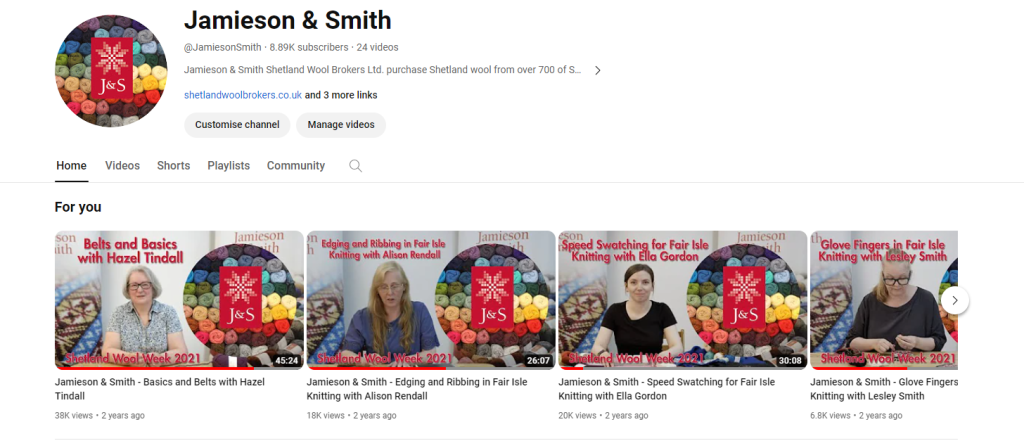

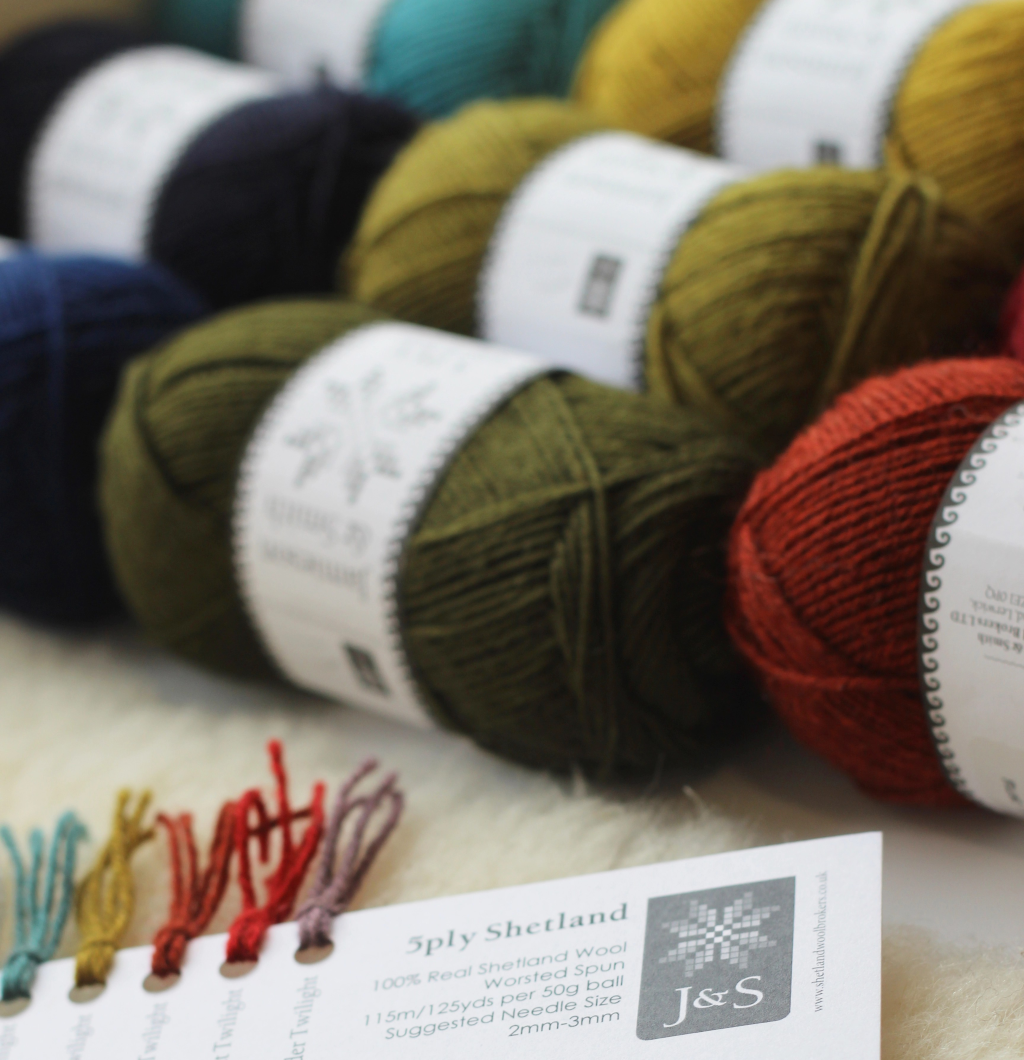

Leave a comment